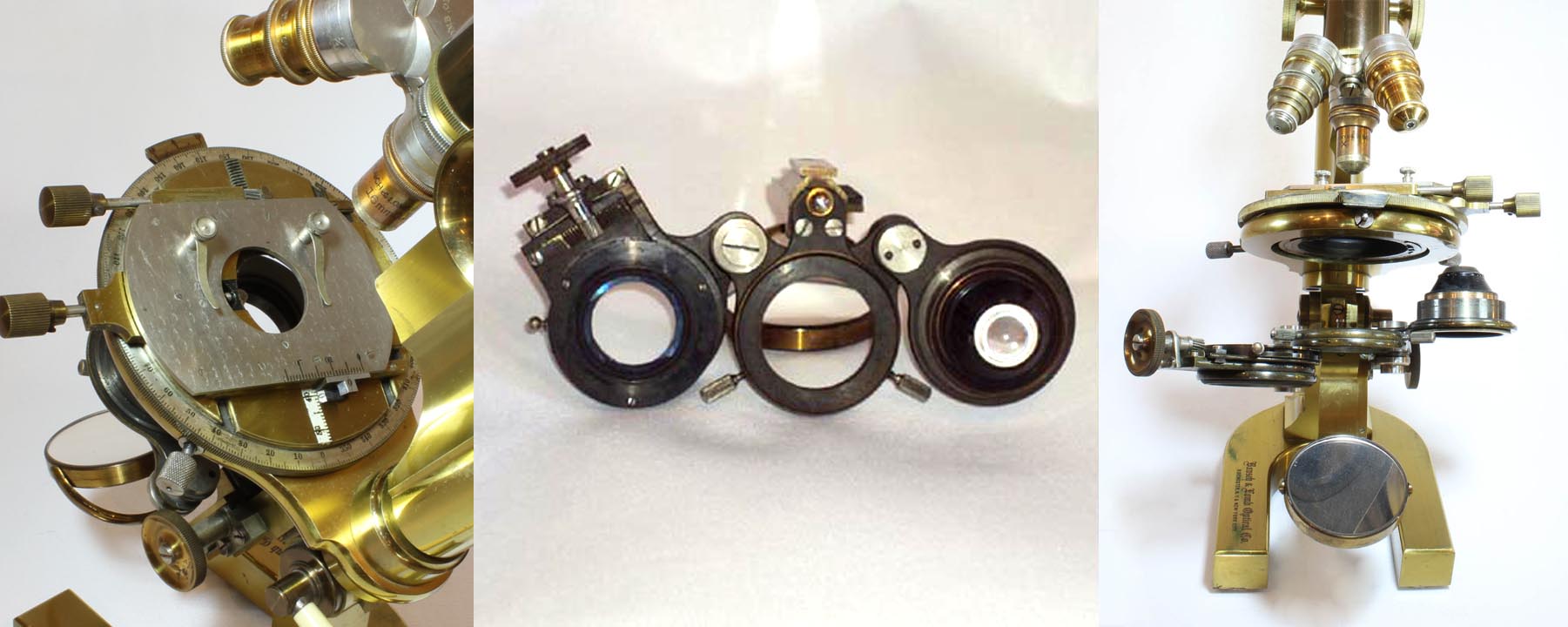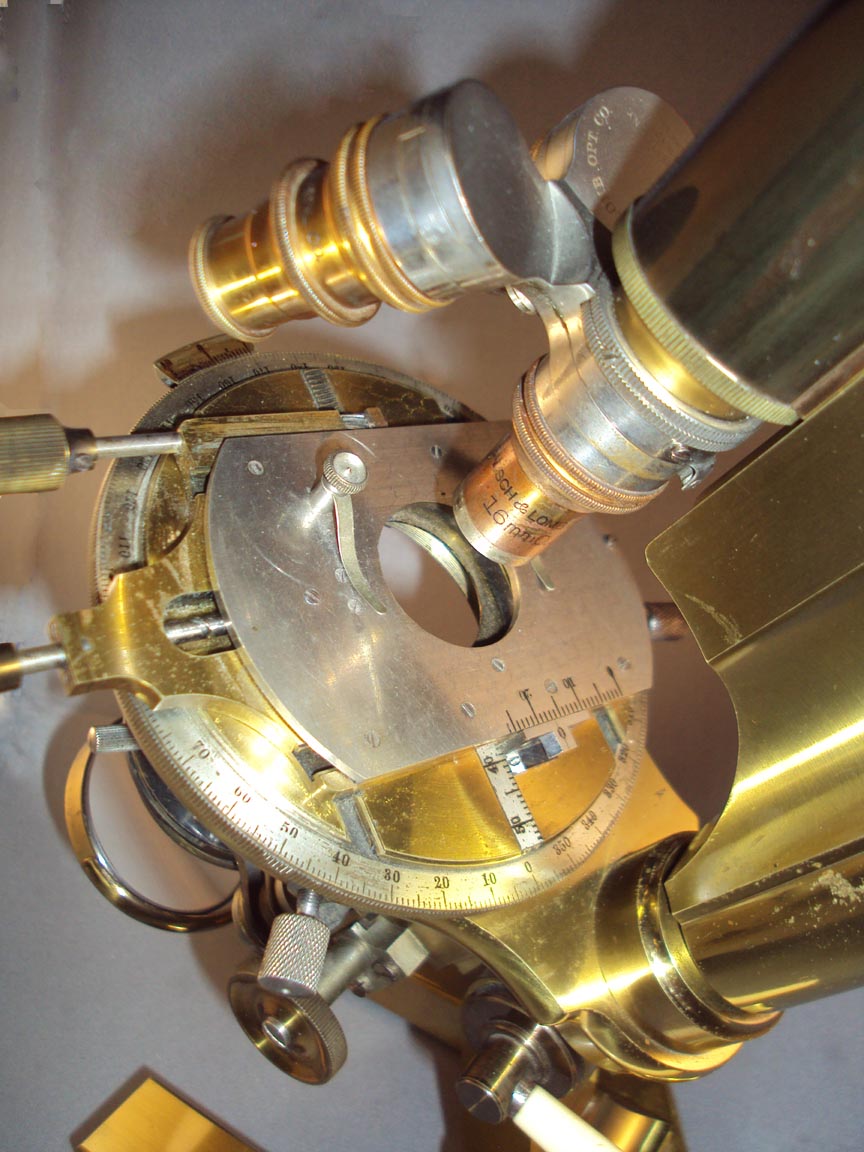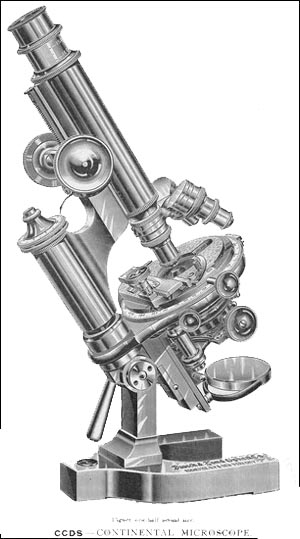Bausch & Lomb Optical Co, Rochester New York & New York City
| DESCRIPTION | HISTORY |



In relisting this stand, we offer an entirely remodeled instrument, new stage and substage, and have been able at the same time to materially reduce the price. The stand is of brass throughout, highly finished and lacquered. The base is of the horseshoe form, but with the back claw projecting to form a tripod support, insuring the greatest stability in all positions of the body.The pillar is massive, of graceful proportions, and the joint has locking lever for securing the body at any angle of inclination. The substage is our New Complete Substage, described and figured on Pages l7 and l8. The stage is our New Mechanical Stage, described and figured on page 19, is revolvable on its axis and has centering screws. The fine adjustment is by micrometer screw acting on the triangular bearing of the arm, the construction being our improved (patented) device doing away with set-screws and springs, and entirely eliminating lost motion either through wear, relaxation of parts, or other cause. The head of the micrometer screw is graduated for measuring the thickness of objects. The coarse adjustment is by diagonal rack and pinion of very great delicacy. The bearing of the sliding parts is not made directly upon the body tube, but upon a separate piece of metal attached to the body tube, whereby we obtain much greater accuracy in fitting and greater stability than can be had by the old method of construction, at the same time giving the proper combination of metals to insure the least amount of wear and least friction. Especial care is given to the fitting of the pinion box, our construction preventing the pinion from ever becoming loose. The main tube has graduated draw-tube work in a cloth-lined sleeve. The Abbe condenser, 1.20 N. A. is part of this stand. Each CCDS microscope is furnished in a polished case, with nickeled handle and lock, and with receptacle for accessories.
inventors.though Koehler was the true original inventor.